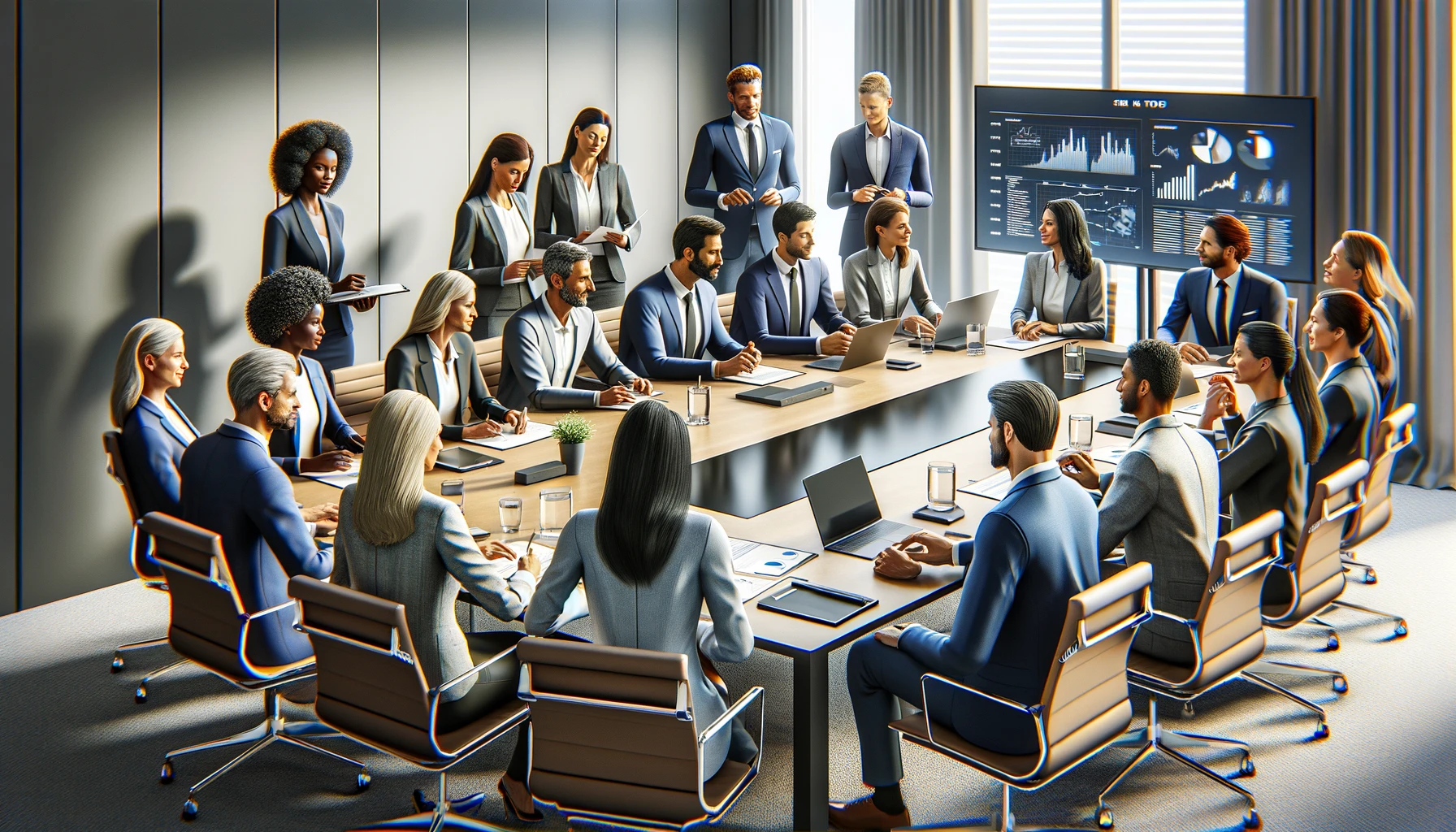Meetings are essential in the business world, but without clear roles and responsibilities, they can quickly become unproductive. When each participant knows their role and what's expected of them, meetings can transform into powerhouses of efficiency and collaboration.

Outline:
Key Meeting Roles for Success
Facilitator: The person who guides the meeting, ensuring that the agenda is followed, and that everyone has a chance to contribute. This role is crucial in steering the discussion and keeping it on track.
Timekeeper: They keep an eye on the clock, ensuring the meeting stays within its allotted time. This role is critical in avoiding overruns and ensuring that all agenda items are covered.
Note-Taker: This person documents the key points, decisions, and action items from the meeting. Accurate notes are vital for post-meeting follow-ups and accountability.
Participant: Each attendee is a participant with a responsibility to contribute, engage in discussions, and respect the meeting structure.
Responsibilities of Meeting Participants
Every participant has a duty to come prepared, actively engage in discussions, and respect others' opinions. Being prepared means reviewing the agenda beforehand, completing any pre-meeting tasks, and coming ready to contribute. Active engagement involves not just speaking up but also actively listening to others.
Deep dive: The Facilitator - Steering the Meeting Towards Success
In the realm of effective meetings, the facilitator emerges as a pivotal figure. This chapter delves into the multifaceted role of the facilitator, whose primary responsibility is to guide the meeting, ensuring adherence to the agenda and equitable participation from all attendees.
Understanding the Facilitator's Role
At its core, facilitation is about more than just overseeing a meeting; it's about creating an environment conducive to collaboration and efficiency. The facilitator sets the meeting's tone, pace, and direction, acting as a neutral party to keep discussions focused and objective. This role is crucial in navigating through diverse opinions and ensuring that the meeting's objectives are met.
Advanced Facilitation Techniques
Effective facilitation requires a blend of skills and strategies:
Conflict Resolution: Facilitators must be adept at identifying and resolving conflicts, ensuring that discussions remain productive and on track.
Engagement Tactics: Keeping all participants engaged and ensuring balanced contributions is a key facet of facilitation. Techniques like open-ended questions and active listening can foster an inclusive atmosphere.
Challenges and Solutions
Facilitators often face challenges such as managing dominant personalities or steering off-course discussions back on track. This section offers practical solutions, like setting clear guidelines and using time checks, to address these common issues.
Deep dive: The Timekeeper - Mastering the Clock
The timekeeper plays a critical role in ensuring that meetings are efficient and productive. This chapter explores the nuances of this role and its impact on meeting success.
The Essence of Timekeeping
Timekeeping is more than watching the clock; it's about balancing in-depth discussions with the need to cover all agenda items within the allotted timeframe. The timekeeper ensures that the meeting progresses smoothly, without rushing or dragging, thereby maximizing the meeting's effectiveness.
Strategies for Effective Timekeeping
Setting Clear Time Limits: Establishing and communicating clear time limits for each agenda item can help in maintaining focus and efficiency.
Gentle Reminders: The timekeeper should provide timely reminders to keep the meeting on track, using tactful interjections to signal when it's time to move on.
Deep dive: The Note-Taker - Capturing the Essence of the Meeting
The note-taker plays a vital role in documenting the key discussions, decisions, and action items from the meeting. This chapter highlights the importance of accurate and comprehensive note-taking for effective post-meeting follow-ups.
The Art of Note-Taking
Effective note-taking involves more than just jotting down what's said; it's about capturing the essence of discussions, key decisions, and assigned action items. The note-taker needs to be attentive, discerning, and organized to ensure that nothing significant is missed.
Techniques for Efficient Note-Taking
Highlighting Key Points: Focus on capturing the main ideas and decisions rather than transcribing the entire discussion.
Organizing Notes: Structured notes, possibly using templates or digital tools, can enhance clarity and usefulness for post-meeting reviews.
The Role of Technology in Enhancing Meeting Roles
Tools like Verbally can significantly enhance the effectiveness of these roles. For instance, a virtual meeting assistant can keep track of time, alert participants when it's time to move on to the next topic, and even ensure that everyone gets a chance to speak. This type of technology supports the roles and responsibilities within a meeting, making for more efficient and productive sessions.
Conclusion: Synergizing Roles for Meeting Efficiency
When roles and responsibilities are clearly defined and supported by effective tools, meetings can become a catalyst for productivity and team collaboration. It's about creating an environment where each person's role is respected and utilized for the collective success of the team.
Moreover, technology can facilitate remote participation, making meetings more accessible and inclusive. This is particularly beneficial in today's globalized work environment, where team members may be spread across different time zones.
In summary, the integration of technology into meeting management is not just a convenience; it's a necessity for fostering a culture of efficiency and productivity in the modern workplace. By embracing these digital solutions, organizations can streamline their meetings, leading to more effective communication and better outcomes.
If you want to dive deeper...
Embracing Efficiency: How to Avoid Distractions in Home Office Meetings Learn strategies to reduce distractions in home office meetings, crucial for maintaining focus and productivity. 🔗 Read More
Fostering Collaboration in Virtual Teams: Proven Strategies and Tools Discover ways to enhance collaboration in virtual teams, key to effective meetings. 🔗 Read More
Upskilling & Reskilling: The Remote Team's Roadmap to Success Explore the importance of upskilling and reskilling in remote teams for improved meeting efficiency. 🔗 Read More

